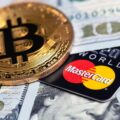average investment > The Transformative Role of Precious Metals in the 4th Industrial Revolution
The Transformative Role of Precious Metals in the 4th Industrial Revolution
For centuries, precious metals like gold and silver have been synonymous with currency. However, in recent times, these metals have evolved beyond their traditional roles, emerging as pivotal players in what many refer to as the 4th industrial revolution. This article delves into the instrumental role of precious metals in cutting-edge technologies, exploring their significance in the landscape of innovation and contemplating their potential as lucrative investments for retirement.
The Distinct Properties of Precious Metals
Historically valued for rarity, durability, and ease of trade, precious metals have found renewed significance in the 4th industrial revolution owing to their unique properties.
Gold
- Conductivity: Gold stands out as one of the most conductive metals, essential for electronic applications.
- Corrosion Resistance: Its exceptional corrosion resistance makes it versatile in industries where other materials might degrade.
- Non-Toxicity: Being non-toxic, gold finds applications in medical devices without posing harm to patients.
Silver
- Conductivity: Silver takes the lead as the best conductor of electricity, contributing to the creation of smaller, more efficient electrical components.
- Reflectivity: Its high reflectivity makes silver ideal for use in solar panels and other renewable energy technologies.
- Antimicrobial Properties: Silver’s antimicrobial qualities find applications in medical domains, ranging from wound dressings to water purification.
Palladium
- Catalytic Role: Palladium plays a crucial role in converting carbon dioxide into fuel, aligning with sustainable energy solutions.
- Water Purification: Its ability to remove impurities makes palladium essential in water purification systems.
- Electronics: Palladium’s unique properties contribute to various electronic applications, from cell phones to computers.
Modern Applications of Precious Metals
Beyond their conventional uses in jewelry, precious metals are integral to several cutting-edge technologies:
Gold
- Nanotechnology: Gold contributes to the field of nanotechnology, enabling the creation of incredibly small devices.
- Quantum Computing: In quantum computing, gold plays a role in leveraging the peculiar properties of quantum mechanics for rapid calculations.
- Renewable Energy: Gold’s superior conductivity is harnessed in renewable energy technologies, such as solar panels.
- Space Travel: Gold enhances the efficiency of fuel cells in space travel, providing a practical solution for energy storage.
Silver
- Flexible Electronics: Silver is instrumental in the development of flexible electronics, allowing devices to be worn or embedded in clothing.
- Wearable Tech: Patents for silver-based flexible batteries suggest advancements in wearable tech, offering longer battery life without added weight.
Palladium
- Fuel Cells: Palladium contributes to the development of fuel cells, surpassing traditional engines in efficiency and emitting zero emissions.
- Hydrogen-Powered Vehicles: In hydrogen-powered vehicles, palladium aids in powering electric motors, presenting a cleaner alternative to traditional fuel cells.
Investing in Precious Metals: Points to Consider
While the growing role of precious metals in innovative technologies suggests a potential increase in demand and prices, prospective investors should bear in mind certain considerations:
- Price Volatility: Precious metal prices can be highly volatile, necessitating preparation for sudden fluctuations.
- No Guaranteed Returns: Investments in precious metals do not guarantee returns, and losses are possible if prices decline.
- Long-Term Commitment: Precious metals are not a quick-profit scheme; investors should be prepared for a long-term commitment to see returns.
- Artificial Scarcity: Speculative activities could artificially inflate prices, posing a risk of future crashes.
- Potential Asteroid Mining: The possibility of mining asteroids, once considered science fiction, may increase the supply of precious metals, impacting prices.
In conclusion, while investing in precious metals presents potential opportunities, it demands a careful consideration of risks and a readiness for a long-term commitment. As the world stands on the precipice of the fourth industrial revolution, precious metals are poised to maintain their status as safe-haven investments. The future holds promise for these metals, and if approached with a strategic and informed perspective, they could prove to be stable and valuable assets in the years to come.




